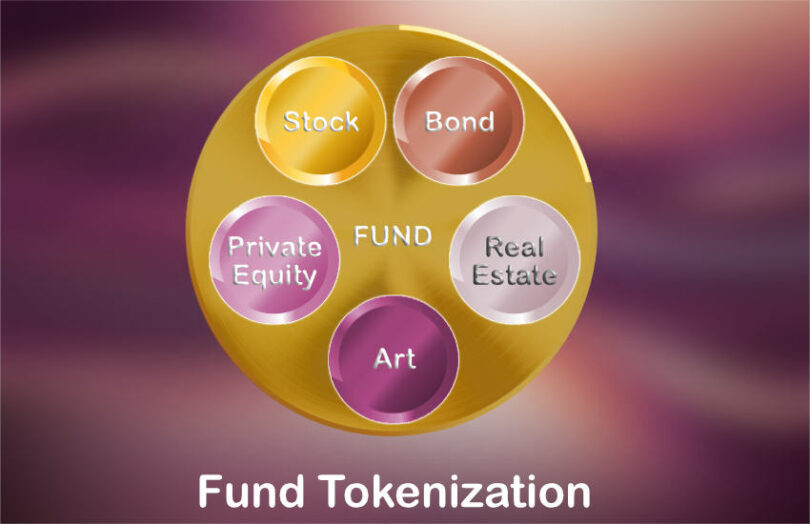Tokenisation has become a subject of growing interest for asset managers in recent years, as they respond to evolving investor expectations. The ability to reconstitute and distribute any number of complex assets as digital entities, lowering both barriers to entry and the cost of trading, is attractive on multiple levels. It promises to meet the appetite for more personalised products from a new generation of customers, as well as tackling longstanding pain points around the efficiency and cost of investing in funds.
It is no surprise that the tokenisation debate has started to enter the mainstream, with more than half of asset managers in Europe now exploring it as a possibility. Regulators are also coming to the party, with pilot projects around tokenised assets variously underway or being planned in Singapore, Hong Kong and the EU. The question is no longer whether tokenisation will be adopted by the asset management industry, but how, and what approaches hold the greatest benefit for funds and their investors alike.
Tokenisation is a broad church in which interpretations may vary on exactly what the objective is, and how deep digitalisation needs to go. There is a minimalist approach, already present in the market, which focuses on tokenising the units of a traditional mutual fund. By allowing these to be traded on a blockchain, with all transactions recorded on a digital ledger, which in theory introduces a greater level of administrative efficiency, but without addressing the deeper-rooted issues of fund structure and distribution. It is a step forward, but perhaps only a taste of what tokenisation can offer.
More ambitious but no less achievable is the maximalist approach, which holds that not just the units of a fund should be tokenised, but the underlying assets too. The benefits of this begins with much wider access to a more diverse pool of assets, and fractional ownership of entities from private equity funds to high-end real estate and investments such as wine and art. Tokenisation can help bring these alternative assets, once largely limited to institutions and the wealthiest individuals, into the mainstream, at a time when interest in them continues to grow – one recent survey found that UK and European investors are increasingly looking towards alternatives as they seek to diversify their portfolios and protect them from inflation.
The benefits of tokenisation go beyond this broader menu. Once the assets themselves have become tokenised, the way is open for automation and transparency across the value chain, from pricing to settlement, analytics and fund administration. This is not just optimising the mutual fund but fundamentally rearchitecting it for the digital, on-demand world: where what the customer orders at the touch of a button can be delivered almost as quickly.
It is this maximalist view of tokenisation that Calastone has been advancing through our Distributed Market Infrastructure (DMI), which connects over 3,500 organisations in asset management, allowing them to access and share real-time data – underpinned by secure permissioning – that is the basis of digitalisation across the fund value chain. This is our operating model for tokenisation, one that we are now presenting to regulators and collaborating on with three major global asset managers. While we are still investing heavily in technology to optimise traditional mutual funds, we are also building for a future in which funds can be built on a new platform for collective investment, enabled by tokenisation.
While tokenisation in any form will represent progress for both asset managers and their customers, its full benefits will only be realised when the urge to digitalise is applied to every aspect of how a fund operates and is structured. The advantages of transacting digitally and in real-time should be extended right across the value chain, targeting inefficiencies in the complex operational web that is the mutual fund ecosystem, as well as opening the door to new asset classes for all.
The maximalist approach does not just promise efficiency and transparency, with the cost benefits that follow. It also points towards a future in which asset managers can dramatically overhaul their customer offer, tailoring products to the individual and drawing on a broad base of assets to satisfy an investor’s interests and risk tolerance. An industry that has been built around one-size-fits-all products can increasingly consider how to give every customer the bespoke service that has hitherto only been affordable for ultra-high net worth individuals.
All this is swiftly moving from theory towards reality as regulators become involved in tokenisation efforts, and major asset managers advance their plans. The potential of tokenisation is increasingly widely recognised. Yet that will only fully be unleashed through a comprehensive approach that goes beyond tinkering at the edges. Asset managers that take an ambitious approach to tokenisation are likely to be best placed as the landscape shifts. This is a revolution that will reward those bold enough to build from the bottom-up.




























